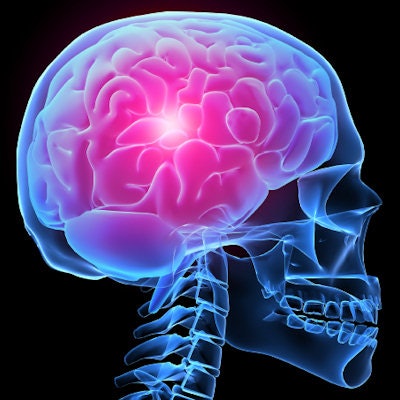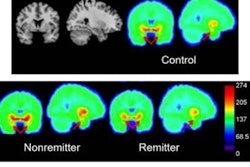
Combining PET scans with a novel radiotracer could help researchers track damage to myelin in the brain, providing insight into the treatment of multiple sclerosis (MS) as well as the development of other disorders, according to a preclinical study published online January 12 in Scientific Reports.
The myelin sheath surrounds and insulates nerves in the brain; currently, there is no reliable way to image the loss or damage of myelin, known as demyelination. To address this, researchers developed a radioactive molecule to use with PET that targets potassium ion channels, which are found on demyelinated axons.
"When there is loss of myelin, these channels become exposed. They migrate throughout the demyelinated segment and their levels increase," said study co-author Brian Popko, PhD, director of the Center for Peripheral Neuropathy at the University of Chicago, in a statement. "So we developed a PET tracer that can target potassium channels."
Popko and colleagues started with the MS drug dalfampridine, which binds to exposed potassium channels to partially restore nerves and alleviate neurological symptoms in MS patients. They analyzed several fluorine-containing derivatives in terms of their abilities to bind to potassium channels. The optimum choice was 3-fluoro-4-aminopyridine (3F4AP), which the researchers labeled with F-18.
The group showed that the tracer accumulated in greater amounts in demyelinated areas than in control areas in rats.
In collaboration with the U.S. National Institutes of Health (NIH), the researchers also evaluated the approach in healthy monkeys. They confirmed that radiolabeled 3F4AP entered the brain of the primates and settled in greater amounts in areas of demyelination.
"We think that this PET approach can provide complementary information to MRI, which can help us follow MS lesions over time," Popko said. "It has the potential to track responses to remyelinating therapies, an unmet need. This approach should also help determine how much disruption of the myelin sheath contributes to other central nervous system disorders."




















